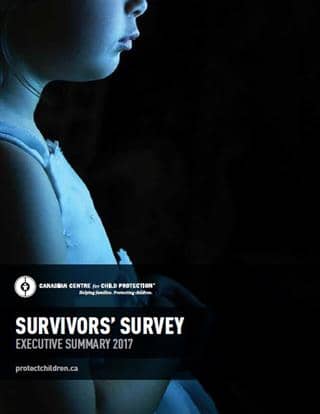For the first time, research has been conducted into the experiences of victims of child sexual abuse material. One hundred and fifty victims from different countries participated through an online survey, set up by the Canadian Centre for Child Protection. The fact that these victims are not only abused, but that images of the abuse may still circulate on the Internet, seems to create an additional component to their victimization. For instance, 71 victims indicate that they are afraid to be recognized.
‘We must not underestimate the impact of the fact that there are images of the abuse and that those images may continue to circulate on the web. It makes victims feel like they don’t have control over their lives’, says National Rapporteur on Trafficking in Human Beings and Sexual Violence against Children, Corinne Dettmeijer, who advised on the research. A victim in the study said: ‘Because it's out there every day, anyone could have seen it. If you walk by someone, you don't know if they've seen it. I have had multiple cases in my own state. I find this very difficult.’ Thirty victims also indicated that they were approached by someone who had recognized them from the images they have found online.
Therapy
Many victims find it difficult to tell someone about the abuse. Moreover, it seems that talking to someone has not always led to improvement of their situation. Out of the 26 victims who told someone, 16 victims reported that they were still being abused after their disclosure. Also, the results show that the victims of sexual abuse often consider therapy to be inadequate for their experiences. Dettmeijer recognizes this: ‘We still do not know enough about the specific needs of these victims. Therefore, we can often not provide them with what they need. Earlier research showed that therapists find it difficult to provide assistance for this kind of trauma. We need more research on how to improve this.’
Webcrawler
The Canadian Centre recommends using a webcrawler which continuously monitors the public Internet and reports child sexual abuse material for removal. In the Netherlands, such a webcrawler has not yet been implemented, despite the fact that the Netherlands is in second place worldwide where child sexual abuse material is hosted. Dettmeijer: ‘The technique for the webcrawler exists, so the police really needs to take action. It is an efficient way to be able to remove child sexual abuse material that is still circulating on the web, which is of great importance to the victims.’
Compensation
Acknowledgement also appears to be essential to victims, for example by financial compensation. The rapporteur stated earlier that victims should be offered the opportunity to be informed if their material appears in a criminal case, in order to seek compensation from the court. This is important because the victims in the survey reported they had difficulties finding or keeping a job or completing their education.
Sexual abuse
A striking result is the fact that 74 respondents claim to be abused by multiple perpetrators who work together. Other results are more consistent with the knowledge about sexual abuse in general, such as the fact that child sexual abuse material often shows children under the age of five. In the questionnaire 85 victims indicated that abuse began before their fifth birthday. Dettmeijer: ‘The police do not interview these young children, which could result in overlooking these victims. We must not miss this group.’ As is the case in sexual abuse in general, the respondents also indicate that the perpetrator often was a member of the victim’s own family or circle of friends: 63 victims indicated that the perpetrator lived in the same house as they did.
The study
The National Rapporteur was part of the international workgroup that contributed to the research with their knowledge and feedback. Dettmeijer: ‘Child sexual abuse material has no borders, so it is good that this research has been conducted internationally.’ The questionnaire has been translated thanks to the support of several victim support groups, who put out the call for respondents within their network. Almost half of the respondents are Dutch. Dettmeijer: ‘Recording sexual abuse of children and spreading the images has unfortunately become easier. That is why it is important to hear the victims’ stories so we can recognize and support them better.’
